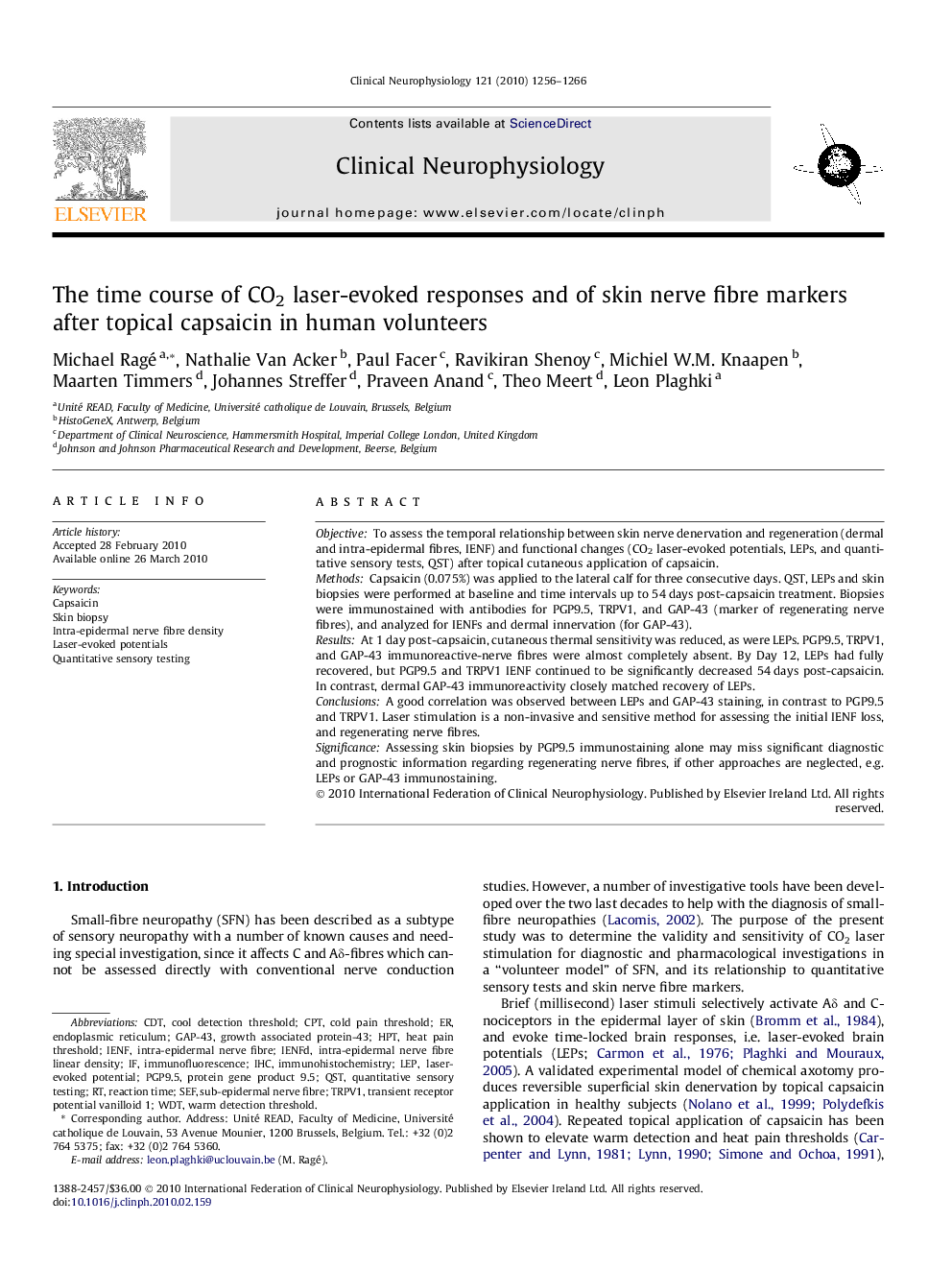| Article ID | Journal | Published Year | Pages | File Type |
|---|---|---|---|---|
| 3044848 | Clinical Neurophysiology | 2010 | 11 Pages |
ObjectiveTo assess the temporal relationship between skin nerve denervation and regeneration (dermal and intra-epidermal fibres, IENF) and functional changes (CO2 laser-evoked potentials, LEPs, and quantitative sensory tests, QST) after topical cutaneous application of capsaicin.MethodsCapsaicin (0.075%) was applied to the lateral calf for three consecutive days. QST, LEPs and skin biopsies were performed at baseline and time intervals up to 54 days post-capsaicin treatment. Biopsies were immunostained with antibodies for PGP9.5, TRPV1, and GAP-43 (marker of regenerating nerve fibres), and analyzed for IENFs and dermal innervation (for GAP-43).ResultsAt 1 day post-capsaicin, cutaneous thermal sensitivity was reduced, as were LEPs. PGP9.5, TRPV1, and GAP-43 immunoreactive-nerve fibres were almost completely absent. By Day 12, LEPs had fully recovered, but PGP9.5 and TRPV1 IENF continued to be significantly decreased 54 days post-capsaicin. In contrast, dermal GAP-43 immunoreactivity closely matched recovery of LEPs.ConclusionsA good correlation was observed between LEPs and GAP-43 staining, in contrast to PGP9.5 and TRPV1. Laser stimulation is a non-invasive and sensitive method for assessing the initial IENF loss, and regenerating nerve fibres.SignificanceAssessing skin biopsies by PGP9.5 immunostaining alone may miss significant diagnostic and prognostic information regarding regenerating nerve fibres, if other approaches are neglected, e.g. LEPs or GAP-43 immunostaining.
